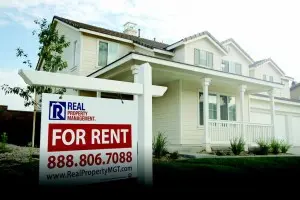Good News for Property Owners and Property Managers | Top 10 Cities Where Rents are Rising
 Business has been good overall for property owners and property managers, but the latest trends show it’s going to be even better.
Business has been good overall for property owners and property managers, but the latest trends show it’s going to be even better.
According to real estate research firm Reis Inc., rental rates have increased over the last year and vacancies have dropped significantly, going from 8 percent in 2009 to just 4.5 percent last year. And, according to Stan Humphries at Zillow, the financial future remains even brighter for landlords.
Ten U.S. cities stand out for having the most promising forecasts for 2013:
1) San Jose, Calif.
- 5.4 percent rent increase from 2011
- 2.8 percent vacancy rate
- Forecast for 2013: 5.3 percent effective rent growth
According to research firm Reis, the vacancy percentage in Southwest has dropped from 11 percent to 5.9 percent since 2009, making San Jose’s 2.8 percent vacancy rate an even better for property managers.
- 5.7 percent rent increase from 2011
- 3.2 percent vacancy rate
- Forecasted for 2013: 5.2 percent effective growth
Rents have steadily increased in San Francisco since 2008 and with the median price of a single-family home hovering around $600,000, even high rental fees are looked at as good values.
3) Seattle
- 5.8 percent rent increase from 2011
- 3.8 percent vacancy rate
- Forecasted for 2013: 5.2 percent effective growth
Housing has been at a premium in Seattle over the last three years and until a number of rental properties are completed over the next two years, there’s a limited supply. Seattle saw its rents increase more than any other U.S. market in 2012.
4) Minneapolis
- 4.2 percent rent increase from 2011
- 2.4 percent vacancy rate
- Forecasted for 2011: 5 percent effective growth
According to Reis, the average rent in the Midwest is projected to increase to almost $1,100 by 2017, a steady increase for cities like Minneapolis.
5) Dallas
- 3.9 percent rent increase from 2011
- 5.4 percent vacancy rate
- Forecasted for 2013: 5 percent effective growth
Demands has increased significantly in North Texas, according to Reis, while vacancies have decreased. Signs of the housing recession are no longer in the Dallas area.
6) Denver
- 4.3 percent rent increase from 2011
- 3.9 percent vacancy rate
- Forecasted for 2013: 4.9 percent effective growth
The average rent at the end of 2012 was just under $900 and vacancies were at an all-time low. Property management companies saw high demand for smaller, more inexpensive units were driving up rents.
7) Portland, Ore.
- 4.9 percent rent increase from 2011
- 3.3 percent vacancy rate
- Forecasted for 2013: 4.7 percent effective growth
The high amount of foreclosures in Portland over the last few years has former homeowners renting, making Portland one of the nation’s highest rental markets.
8) Houston
- 5.5 percent rent increase from 2011
- 7.1 percent vacancy rate
- Forecasted for 2013: 4.6 percent effective growth
Listed on Forbe’s Fastest Growing Cities, developers are trying to meet the demand of renters by building apartments at an alarming rate.
9) Fort Lauderdale, Fla.
- 3.8 percent rent increase from 2011
- 4.1 percent vacancy rate
- Forecasted for 2013: 4.6 percent effective growth
While the housing market has struggled in Southern Florida, rentals have been highly sought after. Rents are projected to hit almost $1,200 in this area by 2017, according to Reis.
10) Texas
- 3.8 percent rent increase from 2011
- 4 percent vacancy rate
- Forecasted for 2013: 4.6 percent effective growth
The average rent at the end of 2012 was $860 in Austin and they’re still going up. Large apartment complexes are being built downtown and they’re almost at full occupancy, at almost double the average rent in Austin.
We are pledged to the letter and spirit of U.S. policy for the achievement of equal housing opportunity throughout the Nation. See Equal Housing Opportunity Statement for more information.
Get the Neighborly App
In addition to Real Property Management's expert skills in managing your rental property, you can utilize Neighborly's other brands to maintain and enhance your home. Use the Neighborly App to get connected to local home service professionals. Download and receive offers only available on the App.
Depending on current health and safety regulations in your area, some of the services mentioned in this post may not be available. Neighborly service providers will follow the latest health and safety guidelines provided by the local and state governments. Please check with your local Neighborly service provider for details at the time you need service(s).






